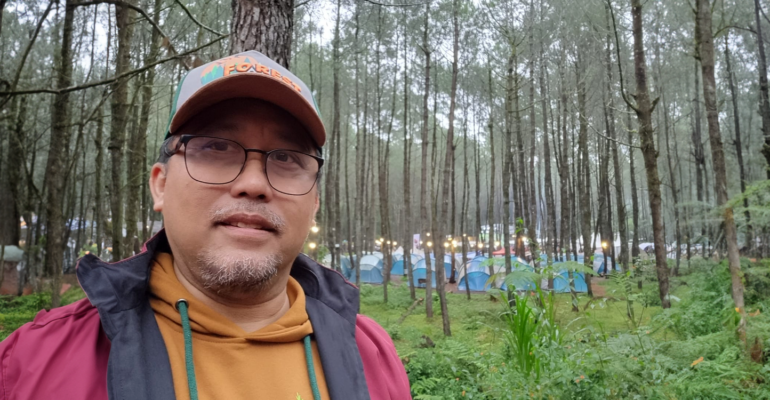IPB University Expert Develops Engineered Bamboo: Strong and Environmentally Friendly

IPB University’s Bamboo Expert, Prof Naresworo Nugroho, said that in line with technological advances, bamboo has transformed into an alternative material that has great potential to become a superior construction material.
In his research, Prof Naresworo has developed many technological innovations in engineered bamboo products. These innovations can be an alternative to modern construction materials that are strong and environmentally friendly.
His engineered bamboo technology includes the development of methods in processing composite materials from bamboo. He has also conducted studies on its structural properties in the form of Bamboo Zephyr Board (BZB), Bamboo Binderless Board (BBB), and Bamboo Reinforces Board (BRB).
“These engineered products have higher strength compared to commercial panel products such as particleboard, plywood and oriented strand board (OSB),” he said in the Press Conference of Pre Scientific Oration of Professor of IPB University (5/6) online.
Meanwhile, Laminated Bamboo Lumber (LBL) products developed by vertically arranging zephyr laminae can provide superior stiffness and strength values compared to solid wood blocks.
He added that the utilisation of bamboo layers as reinforcing material in Bamboo Reinforced Composite Beam (BRCB) products is proven to increase stiffness by 2.9 times. In addition, the strength also increased by 2.3 times greater than without the addition of the coating.
The Dean of the Faculty of Forestry and Environment (Fahutan) of IPB University explained that apart from straight beams, bamboo lamina with a thickness of 4-5 mm can produce arch beam products that are comparable in quality through the cold felting process at a certain radius.
“Efficient and superior laminated beams can also be produced with a naturally curved cross-section. Densification treatment can also produce more uniform quality laminated beam products,” he said.
Meanwhile, the Bamboo Sandwich Panel (BSP) was developed as a composite panel consisting of a thin layer of high-strength plywood or woven bamboo on the outside (face and back), bonded with a thicker core layer in the centre made of vertically arranged bamboo pieces.
“BSP products have the ability and reliability to withstand lateral loads. BSP can be used as a pre-fabricated housing component that is earthquake resistant and environmentally friendly,” he explained.
There is also a high-quality Cross Laminated Bamboo (CLB) product that has been produced by looking at the effect of a combination of thickness and angular orientation of the bamboo lamina. A composite product developed to optimise the use of bamboo is Strand Woven Bamboo (SWB) or Scrimber. SWB consists of bamboo fibres forged into a solid block using phenol-formaldehyde resin.
“The many technological advancements and innovations for bamboo products have great potential to become a superior construction material. Therefore, it is time for bamboo to be promoted as one of the superior materials because it has several features to preserve the environment and as a green construction material,” he said.
However, there are still a number of challenges that must be faced to make bamboo a host in its own country. One of these challenges is the weak value chain of bamboo products. In addition, upstream-downstream policies and programmes in bamboo development have not been integrated.
“Joint efforts and synergy of parties in research, technology development, regulation, and skill enhancement are needed to optimise the utilisation of reeds and engineered bamboo products.
In addition, socialisation and promotion of the use of bamboo as a construction material needs to be improved,” he concluded. (IAAS/RUM)



